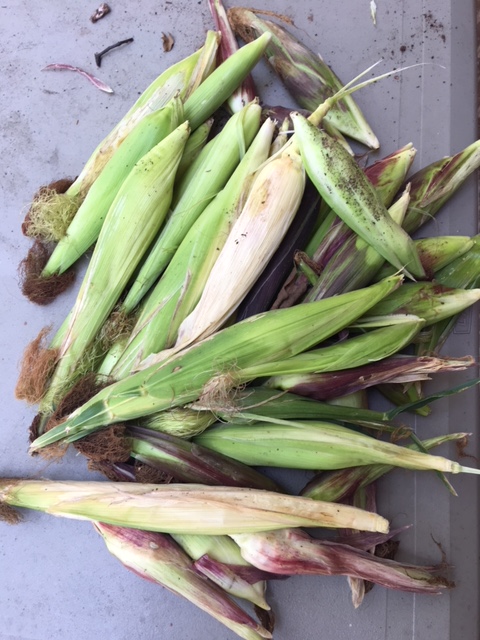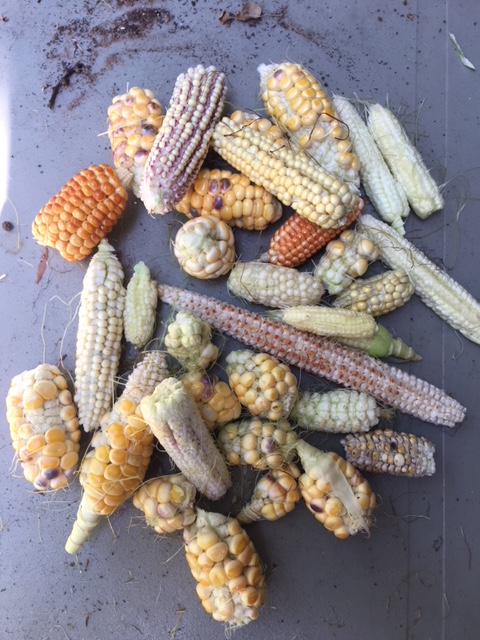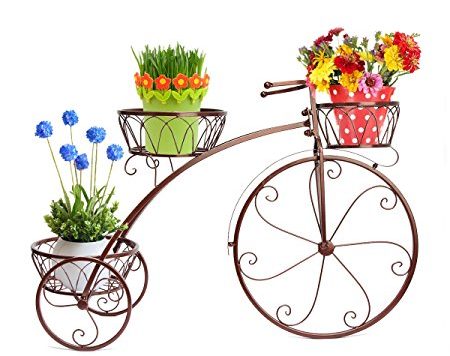We are officially moving into the harvest season. I will have some successes, and I will have some busts. In order to learn and develop, I feel the need to document my efforts. Unfortunately, I start with a bust.


My first corn harvest is dismal. I planted corn mainly for Brad. He grew up in Iowa where growing corn is commonplace. His grandparents (pictured above) were farmers who grew corn by the acre. I assume that there were years of plenty. However, I know there were times of struggle. One such time was documented in 1996 by my brother-in-law, Steve:
Upon his return from World War I military service in France, my grandfather, Adolph Barghols and my grandmother, Irene, farmed 200 acres in Battlecreek Township in northwest Iowa. The “home place” was owned by my Great Grandfather, Wilhelm Bargholz, who emigrated from Germany in the 1880s (probably to avoid conscription in the Kaiser’s army.)
The summer of 1936 was a desperate time for our nation, and particularly for Iowa farmers. By early June, in the midst of the Great Depression, a cruel drought had decimated my grandfather’s entire corn crop. There would be no harvest in 1936.
That fall, he trudged somberly across the lower 80-acre tract his father had called the Bacon Creek Sandy, just across the Chicago Northwestern Railroad tracks and Old US Highway 20, grimly surveying his scorched fields.
In a ditch on the extreme perimeter of his farm, he was surprised to find a dried stalk with two perfectly-formed ears of corn. For some inexplicable reason, he picked the two ears.
As the end of his heavy-hearted hike, he threw the two ears of corn into his machine shed, where they sat without any attention for another 19 years. Upon sale of the family farm in 1955, the two ears were tossed in a box of tools and moved to town to the workshop of my grandparents’ home, where they lay inconspicuously on my grandfather’s workbench throughout his productive 25-year retirement.
After my grandfather’s funeral, I found the two ears of corn and asked my grandmother about them.
She shared with me that those two ears of corn represented an entire year’s work by a young farm couple struggling to raise three children under what would have been onerous conditions even without a catastrophic drought. Up every morning for chores before 5:00am, my grandparents had labored long hours, in their fields and their neighbors’ fields, day after day, week after week, for the entire year of 1936, only to realize a year-end harvest consisting of those two ears of corn.
One can only imagine the crushing sorrow and discouragement which must have settled on my grandfather’s 40-year-old shoulders. How would he feed his family? Could he save his family’s farm?
Steve took those two ears of corn back to Oklahoma with him, and now they are displayed in a shadowbox in his home. As Steve looks upon those two ears of corn, he is reminded of the hardships that his grandparents faced in the early years of their life together. To Steve, those two ears of corn represent the courage and perseverance of his grandparents. By having them on display in his home, he hopes the ears of corn will inspire future generations of Barghols.
I am a Barghols by marriage. My gardening efforts are not sustaining my family, nor are they paying the mortgage. Still, I take my gardening seriously and I am disappointed by the corn results. I am also dismayed to now fully take notice of the price of produce in the grocery store. After all my unsuccessful labors to grow a single ear of corn for my husband to consume, I find that I can purchase fresh ears of corn at the local grocery store for a mere 15 cents each.

The one bright spot in all of this goes back to another blog post and the key word of POTENTIAL. I see potential. Not in the typical sweet, yellow corn that I failed to produce and could buy for 15 cents, but in the decorative Indian corn. I actually grew a few good ears. A couple of the ones in this picture will have to be thrown away because they have mold growing on them. However, a couple of ears are worth saving. And the crop is definitely worth trying again. I had some extra seeds, and in Oklahoma we still have time to get a second planting of corn in the ground. I’m excited to see what I can produce this time.
Often when I am writing my blog, I am thinking of my children. That is definitely the case in this instance, as I want them to remember the story about their great grandparents. So for their benefit, I want to emphasize a couple of points:
- In 1936, people in American were gardening to sustain their families and make a living. And at many times, that was a tough endeavor.
- Try, try again. Persevere. You can do it.
- In 2018, we should take a moment to consider and appreciate the American farmers who work to put food on our table. It takes a lot of effort and there are many uncontrollable variables.
- Identify things that have potential. Find things that work for you, and go for it.
And for the record, despite the corn failure I am still loving Patch405!


I ENJOYED READING YOUR BLOG! I WILL DEFINITELY VISIT AGAIN. WE TAKE SO MUCH FOR GRANTED!!
LikeLiked by 1 person
If I were not such a devout Californian, I could so be an Okie. I have been told that by Okies. One of my best friends from near Newalla used to tell me that I really am an Okie who just happened to land in California. I intend to stay here, even though it is not what it used to be. I learned from Okies though. Those who migrated to California during the Dust Bowl influenced our culture just like everyone else. As much as I love California, I really wish I could be in Oklahoma too.
LikeLike
My Great-Great Grandfather was this same Adolph Barghols. He was one of the first of his region to use contour farming. My grandfather was Verne Barghols. I currently live in western Kansas and can now appreciate some of the struggles they must have endured, although on a very small scale. Thank you for this little piece of my family’s history!
LikeLike
Doug – how did you find my blog? My husband is Brad. His father was Loren. Verne and Loren were brothers – Verne was the oldest.
LikeLike